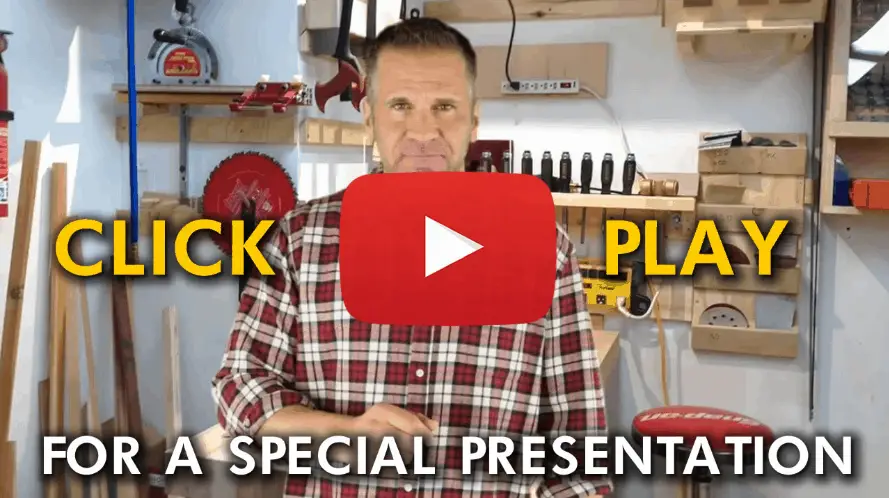Subscribe to 731 Woodworks on Youtube
Woodworking is a fascinating hobby that can turn into a lucrative business. However, in order to be successful, you need to have the right tools. In this blog post, we will discuss five small woodworking tools that are essential for every woodworker. These tools are relatively inexpensive and easy to use, so don’t miss out on adding them to your tool arsenal!
Right Angle Attachment

Click Here To Check Price on Amazon
What Is A Right Angle Drill Attachment?
A right angle drill attachment is an accessory that allows you to drill in tight spaces by giving you a 90-degree angle. This is helpful for drilling holes in the wall, or between two objects. You can also use it to drive screws into hard-to-reach places. There are many different types of right angle drill attachments, so be sure to choose the one that is best for your needs.
Is A Right Angle Drill Worth It?
This is a question that many woodworkers ask themselves, and the answer really depends on what you plan to use it for. If you need a drill that can make precise right angle cuts, then a right angle drill is definitely worth the investment. However, if you only need a basic drill for everyday tasks, then a standard drill will likely be just fine.
Nail Punch

Click Here To Check Price on Amazon
What Does A Nail Punch Do?
A nail punch is a small, handheld tool that is used to drive nails flush with the surface of a piece of wood. It has a cylindrical head with a pointed end and a blunt end. The pointed end is used to indent the head of the nail, while the blunt end is used to hit the nail flush with the surface of the wood. Nail punches are a must-have tool for any woodworker.
Why Is The Tip Of A Nail Punch Cupped?
The cupped end of the punch is designed to fit over the top of a nail head and then strike it with a hammer, driving the nail below the surface of the wood. This allows you to secure nails without marring or distorting their heads. Punching nails in this way also gives you more control, preventing them from slipping out of the wood and causing damage.
The next time you’re working on a project, try using a nail punch to secure your nails. You’ll be surprised at how much easier it is to use than a hammer alone!
Can You Use A Nail As A Center Punch?
Yes, you can use a nail as a center punch. It’s not the best option, but it’ll do in a pinch. Center punches are designed to make precise indentations in material so that you can start drilling or driving a fastener without having to worry about slipping off of your target. A nail is too blunt and will deform the material more than necessary. If you don’t have a center punch, try using the end of a drill bit or even a key. Anything with a sharp point will work better than a nail.
[Video] 3 Most Common Mistakes
When Setting Up Shop

A woodworking friend of mine shared this video by Ralph Chapman with me that helped him set up his workshop.
The video explains the benefits of Ralph Chapman’s guide about setting up an affordable workshop and avoiding the most common mistakes offers to anyone interested in woodworking.
Massca Twin Pocket Hole Jig Set

Click Here To Check Price on Amazon
Massca Aluminum Pocket Hole Jig System Pro M2

Click Here To Check Price on Amazon
Are Pocket Holes Stronger?
Pocket holes are a great way to join two pieces of wood together, but are they stronger than other methods? In general, pocket holes are pretty strong. They can hold quite a bit of weight without breaking. However, in some cases they may not be as strong as other methods. It really depends on the type of wood you’re using and the type of pocket hole jig you’re using.
If you’re looking for a strong joint, try using a dowel instead of a pocket hole. Dowels are made from wood and they’re inserted into the two pieces of wood you’re trying to join. They can hold a lot of weight and they’re very strong. Plus, they’re easy to use.
If you’re looking for a quick and easy way to join two pieces of wood together, pocket holes are a great option. They’re strong, easy to use, and relatively inexpensive.
Should You Glue Pocket Hole Joints?
There is some debate over whether or not to glue pocket hole joints. On one hand, it’s a good way to ensure that the joint will be strong and stable. However, on the other hand, it can add extra thickness and weight to the piece you are building. You also have to make sure that you use a waterproof adhesive if you are going to glue the joint.
Some people also argue that pocket hole joints don’t need to be glued because the screws hold the joint together very well. However, I like to use a small amount of adhesive just to make sure that the joint is extra strong.
10 Woodworking Tools Not To Buy

Are Dowels Stronger Than Pocket Holes?
Pocket holes are a great way to join two pieces of wood together, but is it stronger than using dowels? In most cases, the answer is yes. Dowels are inserted into drilled holes in both pieces of wood, then glued and clamped in place. This creates a much stronger joint than pocket holes. However, if you are using a fine wood like cherry or walnut, pocket holes may be the better option, as dowels may not be strong enough to hold the pieces together.
My Swiss Army Knife

Click Here To Check Price on Amazon
Why Is The Swiss Army Knife Iconic?
It’s not because of its large size. In fact, it’s one of the smallest knives around. But what makes it so popular is its versatility.
Starette Combination Square

Click Here To Check Price on Amazon
Swanson Combination Square

Click Here To Check Price on Amazon
How Do Combination Squares Work?
A combination square is a tool that woodworkers use to check the accuracy of their work. It can also be used as a ruler or depth gauge. The blade on a combination square is adjustable, so it can be used for multiple tasks. The most common use for a combination square is checking the angle of two pieces of wood against each other. The square can also be used to check the depth of a hole or to mark a line perpendicular to an edge.
How Do You Set A Combination Square?
First, loosen the thumbscrew on the stock. Next, align the blade with the desired angle and tighten the thumbscrew. Finally, slide the rule so that it lines up with the edge of your workpiece and readjust if necessary. There you have it! Your combination square is now set to the desired angle.
What Are The Parts Of A Combination Square?
A combination square is a tool that woodworkers use to measure and mark angles, as well as to check the accuracy of their work. The basic components of a combination square are a ruler or blade, a 90-degree angle, and a V-notch. The blade is typically 12 inches long, and the V-notch allows woodworkers to make accurate measurements on curved surfaces. The angle can be set to any desired degree, and a spirit level ensures that the angle is precise. By using a combination square, woodworkers can quickly and easily ensure that their work is accurate and looks great.
Recommended Resources:



